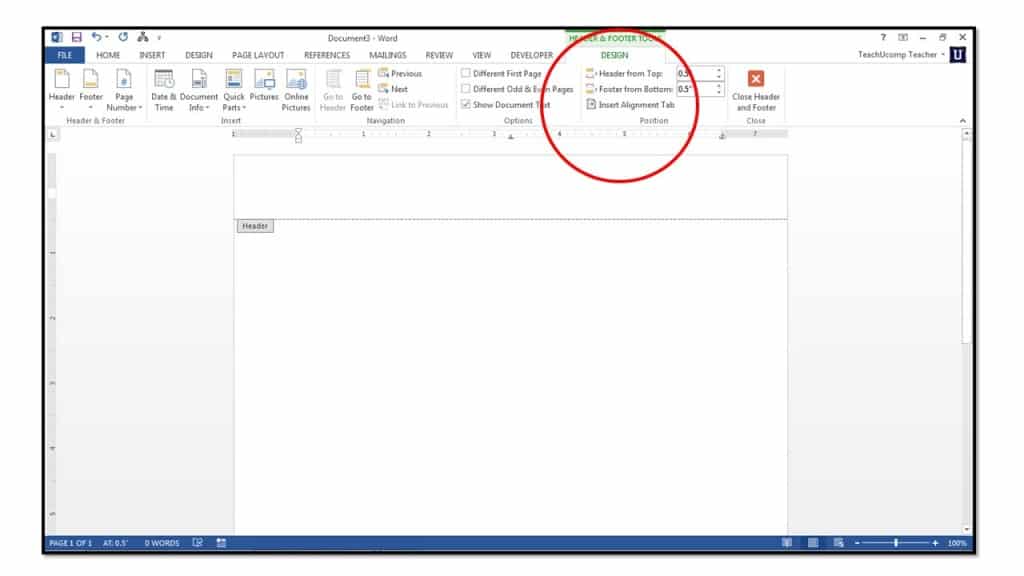

If you want the horizontal line, you can insert it. After setting the parity page to be different, you can also set the parity page number to be continuous.īy default, the header and footer in word haven't a horizontal line (that is, underlined text). The paragraph is moved to the next page.Īny of these settings coming into play would obviously affect the distance between what is at the bottom of the page and any footer on the page.Header and footer in word are all the same by default, but you can set different home and other pages, different odd and even pages, different vertical and horizontal pages, and you can set the first page and the last page without the header but all pages in the middle must has a header. All lines in the paragraph must appear on the same page, so if at least one line would normally flow to the next page, then the entire paragraph is moved to the next page. The paragraph must appear with the paragraph that follows it, so it is moved to the next page.

If this movement means that a single line is left at the bottom of the page, then the entire three-line paragraph is moved to the top of the next page. If a single line would appear at the top of the following page, an extra line is moved from the bottom of the page so that at least two lines appear at the top of the next page. They have the following effect on text that appears at the bottom of a page: The Line and Page Breaks tab of the Paragraph dialog box.Īt the top of the tab are four settings that control how Word "paginates" the paragraph. You want to pay attention to the Line and Page Breaks tab. You can see these settings if you display the Home tab of the ribbon and click the small icon at the bottom-right of the Paragraph group. There are four settings that can be applied to paragraphs (either explicitly or through the use of styles) that affect what happens to paragraphs at the bottom of a page. I mentioned earlier that there are potentially three other settings which can affect the space between body text and footer text. If you do something like this, then Word gives the Footer setting precedence and implicitly "moves" the bottom text margin so that the footer and the body text don't print on top of each other. For instance, you wouldn't want to specify a Bottom setting of. You'll want to make sure that you don't "overlap" the Bottom and Footer settings. You can reduce the distance between the text and the footer by decreasing the Bottom setting and/or increasing the Footer setting. (The baseline is the imaginary line on which letters "sit." Some letters include descenders-like the lowercase j or p-which means those letters "descend" below the baseline.)įor the most part it is these two settings-Bottom on the Margins tab and Footer on the Layout tab-that together define the distance between the body text and the footer text. The setting actually represents where the baseline of the bottom line in the footer will appear. 5 inches means that the footer will appear a half-inch from the bottom of the page. Note that this setting specifies how far the footer should appear from the bottom edge of your printed page. The setting you want to pay attention to here is the Footer setting. The Layout tab of the Page Setup dialog box. Now display the Layout tab of the dialog box. If the Bottom setting is 1 inch, then Word makes sure that nothing in the body of your text extends into the one-inch of space at the bottom of the printed page. This is where you set your bottom margin for the page.

Note the settings in the Margins area, particularly the Bottom setting. The Margins tab of the Page Setup dialog box. Start by displaying the Page Layout tab of the ribbon and then clicking the small icon at the bottom-right of the Page Setup group. This setting determines the margins for the main body of text on each page of your document. The first setting is your actual page margin setting. There are actually two-and possibly six-settings at play when Word lays out your text near the bottom of a page.
How to close header and footer in word how to#
She's unclear on how to do this in Word, so is looking for a bit of direction. Mindy would like to decrease the space that appears between the last line of text on a page and the common text (document title, date, page number, etc.) that appears in her page's footer.


 0 kommentar(er)
0 kommentar(er)
